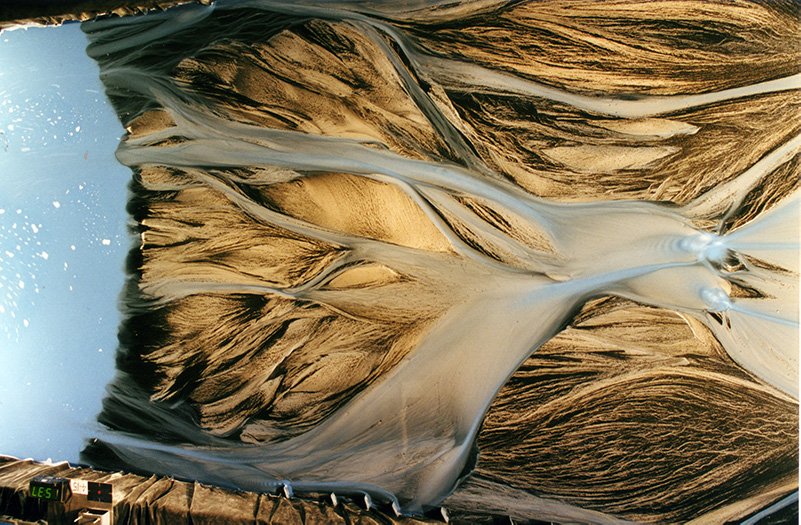Experimental Earth Scape Basin: Steering of rivers by uplift and lateral sedimentation

The "eXperimental Earth Scape" facility (XES), invented by recently retired Jim Mullin and commonly known as the Jurassic Tank, is one of the largest and most unique experimental basins at the St. Anthony Falls Laboratory (SAFL). Many experimental delta facilities exist around the world, some of which have been constructed by the SAFL staff, but the Jurassic Tank is one of a kind.
The basin works on a bed of more than 400 cells that simulate subsidence in the basin floor. The system allows remote control of the subsidence of the gravels and gives the opportunity to the user to design a subsidence scenario according to his/her objectives. This advanced system is also accompanied by the most advanced data carriage and camera system at SAFL to scan and cut sections for better visual investigation.
The most recent use of the XES basin was a large-scale research project that lasted from February to September 2015 and was led by SAFL postdoctoral associate Jean-Louis Grimaud. The experiment (XES15) was developed in the frame of collaborations of the SAFL Sedimentology group, industrial partners, and academic institutions (such as the Colombia and Vanderbilt Universities). The scientific motivation for this work was to understand the dynamics and responses of deltas over a timescale of millions of years in an area largely controlled by tectonic forces. Such a configuration can be found in deltaic systems such as the Bengal basin at the foot of the Himalayas.
Jean-Louis’s experiment was designed to allow for an uplift structure throughout the experiment. However, the basement gravels could not be raised, so the Jurassic Tank’s ocean level was actually lowered to create the illusion of sediment uplift. During the experiment, a lateral source of sediment was activated in front to “compete” with the uplift. The goal was to measure which one had the greatest impact on delta river morphodynamics: underlying tectonic forces or the surficial sedimentation. This unique facility allowed researchers to investigate competing dynamics and their resulting research suggested that tectonics play a strong driver in the evolution of a sedimentary basin and can influence sediment transport dynamics in front of large growing mountain belts.
